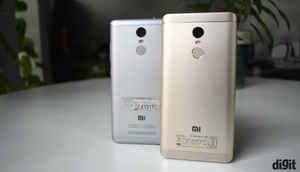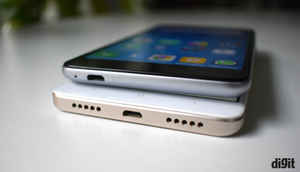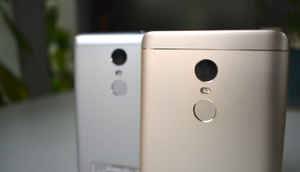
Xiaomi Redmi Note 3 was the best budget smartphone of 2016. The phone was so good that it’s performance is still unmatched in the sub-10K category. Today, Xiaomi announced the successor to the Redmi Note 3 - the Redmi Note 4. The phone all new hardware and a slightly altered form factor. We take a look at the phone from an aesthetic perspective and what has changed when compared to its predecessor.

Before we begin, here are the key specifications of the Xiaomi Redmi Note 4. Prices start at Rs. 9,999 for the 2GB, 32GB variant
Display: 5.5-inch, 1080p
SoC: Qualcomm Snapdragon 625
RAM: 2/3/4GB
Storage: 32/64GB
Camera: 13MP, 5MP
Battery: 4100mAh
OS: Android 6.0
The 3GB, 32GB version of the phone is priced at Rs. 10,999 and the 4GB, 64GB version of the phone is priced at Rs. 12,999.

Like the Redmi Note 3, the Redmi Note 4 also has a metal and glass build, which looks and feel more premium than the last gen device. The Redmi Note 4 is also the first Redmi device to feature a 2.5D curved glass.

Xiaomi VP, Hugo Barra was happy about the fact, that unlike the Redmi Note 3, the Redmi note 4 has symmetrical ports and speaker grills. Although, the phone only has one speaker on the right side.

There are subtle changes in the contours of the two devices as the Redmi Note 4 leaves the rounded edges behind in favour of a more square-ish stance. A good thing is that the power and volume keys are located on the exact same location as the predecessor and are just as easy to use.

Both phones have a similar display on paper, and for the most part they are. Although, the display on the Redmi Note 4 is somewhat dim compared to most budget devices out there. We recorded a max luminescence of 474 lux on the device.

On the performance side, the phone packs the relatively new Qualcomm Snapdragon 625 SoC, which is not as powerful as the Snapdragon 650 SoC used on the Redmi Note 3. Still, the phone does not disappoint and gets by even with heavy workloads with minor stutters.

Xiaomi claims the biggest change however is in the battery life. According to the company the Redmi Note 4 offers 25 percent more battery life than its predecessor. In our own tests, the Redmi Note 4 lasted for about 5 hours more than the Redmi Note 3. This should be enough for heavy users.

While the Redmi Note 3 was a good phone overall with its great performance and respectable battery life, the camera was one of its weakest links. In the Redmi Note 4, there is an all new 13MP rear camera. The camera quality has improved overall, as the Redmi Note 4 captures more details, but it still lacks the finesse in low light settings.